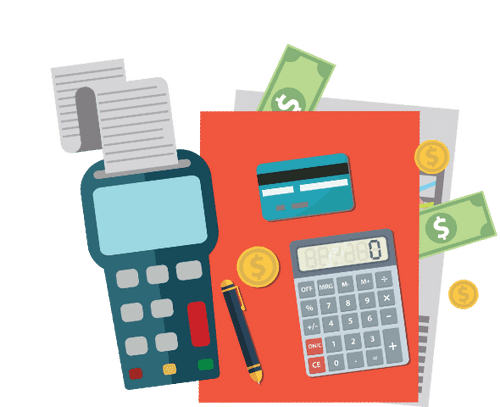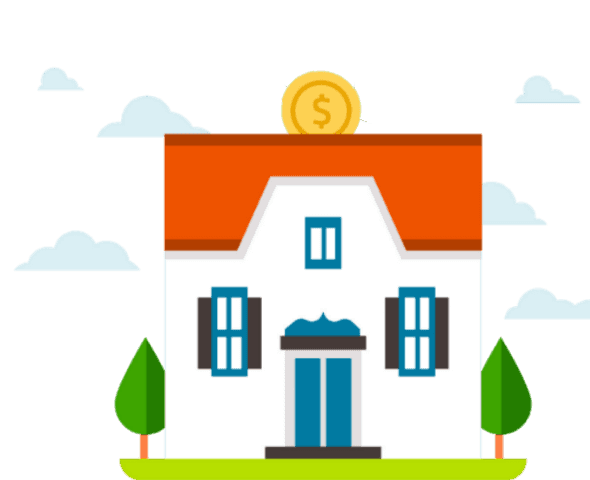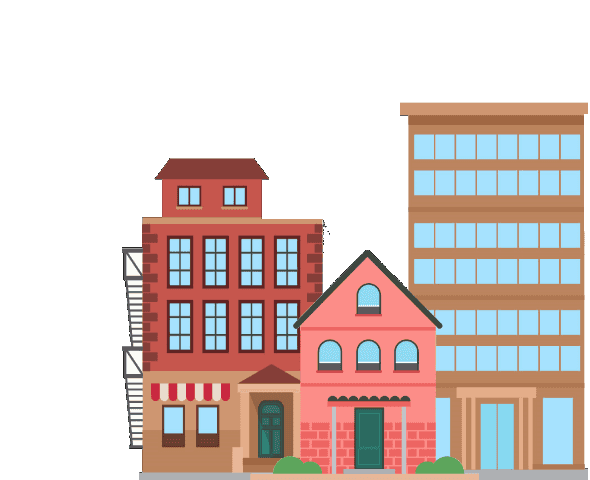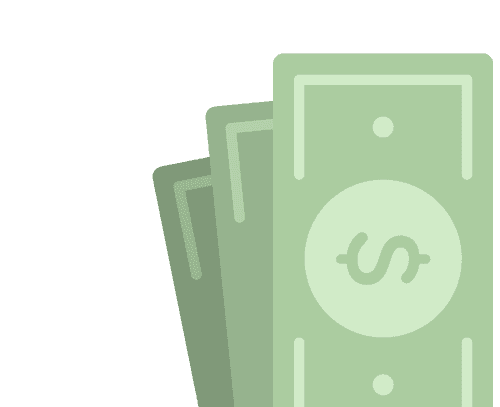One of the most important elements of buying a home is getting approved for a mortgage. For Canadians, understanding this process is essential before making a home purchase because if you’re not organized, it can be a lot more overwhelming and difficult than it needs to be. Here is a simple overview of how mortgages work in Canada.
Key Application Requirements
Before you apply for a mortgage, it’s important to consider these five requirements for your application to run smoothly with any lender in Canada.
1. Down Payment
In Canada, buyers are required to have a minimum down payment of 5%. There are two types of mortgage down payments: High-Ratio and Conventional.
- High-Ratio Mortgages
- A high-ratio mortgage is when a buyer makes a down payment of 5% to 19.99%. This type of down payment requires CMHC insurance, a one-time fee that protects the lender if a borrower defaults on their mortgage. These mortgages are only available to buyers who purchase a home below $1 million.
- Conventional Mortgages
- These apply to buyers who have a down payment of 20% or higher. These homebuyers do not have to pay for CMHC insurance. It’s also important to note that if you are buying a home that is $1 million and above, you are required to put down at least 20% and have a conventional mortgage.
2. Strong Credit
A credit score is a number given to you based on the repayment history of your credit facilities, such as credit cards, lines of credit and auto loans. Overall, lenders will be more favorable to buyers with a credit score of 650 or higher, however, there are some Prime A lenders that accommodate buyers with lower scores. If someone is seeking a mortgage and their credit is below 600, there are B lenders and private lenders that can provide options at higher rates.
3. Low Debt-to-Income Ratio
Your debt-to-income ratio shows lenders how much debt you can manage based on your current financial situation and in the case of future financial difficulties or rises in interest rates. A low debt-to-income ratio (20% or lower) demonstrates that you have a good balance between debt and income and will be able to manage your monthly payments, while repaying any debt that you owe. When speaking with a mortgage advisor, like someone from our team at Homewise, they will help you understand what this means in your unique situation and how to potentially improve your numbers.
4. Secure Employment Income
When applying for a mortgage in Canada, one of the first things lenders will require is proof of income and employment. This helps them understand if you have a steady source of income each month and are able to afford your mortgage payments. Based on your income level and type, lenders will determine how much they are eligible to borrow. If you are self-employed or work on contract, there are options available for you. In these cases, lenders will generally look at the last two years of your tax documents and average out your income to qualify.
5. Important Documents
When you begin the mortgage process, you’ll need to provide your lender key documents and information. These are some of the key documents needed to qualify for a mortgage:
- Photo ID: Canadian driver’s license, passport and health card
- Job Letter: Letter from your employer explaining your job position, length of employment and income amount
- T4 and/or T4A: To verify your income over the last two years
- T1 General Tax Return: To verify your income if you have are commission-based
- Notice of Assessment (NOA): To show a breakdown of your income from the past year, the date your tax return was reviewed and details of how much you owe or the amount of your refund
- Pay Stub: To validate your income and confirm that your job letter and application are aligned
- Bank Statement: To verify your balance and where your income is deposited and expenses are paid. A lender will look at the last three months of your bank statements to see your average salary, down payment, and any major expenses.
- Gift Letter: If you are receiving help from family for your down payment, this letter confirms who your family member is, the amount they’re giving and that the money is being used for the home purchase.
Get Pre-Approved for a Mortgage
Mortgage pre-approval helps buyers understand their home affordability right from the start. It gives lenders the opportunity to look through your financial picture (such as income and employment type), review your credit score(s) and most importantly, approve the loan amount that you are eligible to borrow. Although pre-approval isn’t mandatory in Canada, it’s highly recommended because it allows buyers to set a clear budget, simplify their home search, shop homes that they can actually afford and lock in a mortgage rate for 120 days.
Canadian Mortgage “Stress Test”
In Canada, home buyers are required to pass a mortgage “stress test” to qualify for a mortgage. A mortgage stress test helps to determine how much you can afford under specific circumstances such as if you lost your job, your income drops or if interest rates were to rise. Essentially, lenders want to know if you’ll still be able to afford your mortgage payments if these situations were to happen down the line.
To pass the stress test, buyers need to prove that they can afford a mortgage at a qualifying rate. For buyers who have a down payment of 20% or more, this rate is determined using the Bank of Canada's five-year benchmark rate or the interest rate offered by the lender plus 2% (whichever is higher). For those who have a down payment of less than 20%, the rate is either the Bank of Canada five-year benchmark rate or the interest rate offered by the lender.
The Types of Mortgages
Choose the best mortgage in Canada to suit your needs
In Canada, buyers are given the option of having an open mortgage or closed mortgage.
- Open mortgage: An open mortgage allows you to pre-pay any amount of your mortgage at any time without facing a prepayment penalty. However, interest rates for an open mortgage are higher to compensate for the flexibility of being able to pay it off at your own pace.
- Closed mortgage: A closed mortgage cannot be prepaid or refinanced before the end of its term, without having to pay a penalty fee. Although a closed mortgage limits your prepayment options, it usually comes with a lower interest rate than an open mortgage.
Amortization
In other words, how many years will it take you to pay off your mortgage? The length of your amortization will determine the amount you will pay for your monthly mortgage payments and the interest you pay over time. In Canada, amortization periods typically range between 15 to 30 years, with most people choosing either 25 or 30 years. For buyers with a down payment of less than 20% of the purchase price of your home, the maximum amortization length they can have is 25 years.
Mortgage Term
A mortgage term is the length of time a buyer is locked into a particular lender, interest rate, mortgage features and their associated terms and conditions. In Canada, mortgage terms are typically five years or less. This means that your mortgage term will end before your amortization period ends, requiring you to either renew your mortgage with your current lender or refinance/switch to a new one. At Homewise, we always encourage clients to shop around and consider new options when renewing as it could save you thousands of dollars. Our team of mortgage advisors is dedicated to finding the best mortgage in Canada that meets our clients’ needs, whether it's a new mortgage or a renewal.
Interest Rates: Fixed vs. Variable
A fixed rate is a mortgage loan where the rate and amount of the mortgage paid off stays the same through the term of the loan. For example, if you have an interest rate of 2.33% on a 5-year fixed mortgage, the rate will be the exact same for the full 5 years of the term and your payments will not change. This is an option that is chosen more often by Canadians because it has more cost assurity.
A variable rate is a loan where the rate may change over the term of the mortgage based on market conditions. Payments will usually stay the same (depending on the lender of choice), but the amount of mortgage paid off will increase or decrease based on the rate changes determined by the Bank of Canada. For example, if you have a 2.5% 5-year variable mortgage, the rate may go down to be 2.3% during years 3-5. Your monthly payments will stay the same, however, the amount of the mortgage paid off will have increased because of the decrease in rate. While more Canadians choose fixed rates, over the last 30 years, variable rate borrowers have generally saved more money on their mortgage.
Payment Schedule
In Canada, there are multiple payment schedules homeowners can choose to pay for their mortgage. These include:
- Monthly: Payments are made once per month
- Bi-Weekly: Monthly mortgage payment x 12 ÷ 26 and paid every other week.
- Weekly: Monthly mortgage payment x 12 ÷ 52 and paid every week.
- Accelerated Bi-Weekly: Monthly mortgage payment ÷ and paid every other week. This payment schedule enables borrowers to pay off their mortgage quicker and therefore pay less interest.
- Accelerated Weekly: Monthly mortgage payment ÷ 4 and paid every week. Similar to accelerated bi-weekly, this is a payment method used to pay off a mortgage quicker and pay less interest overall.
Types of Lenders
There are three types of mortgage lenders in Canada – Prime A, B and private lenders.
- Prime A Lenders: These are traditional lenders such as big banks, monoline lenders and credit unions who typically focus on borrowers with good credit scores and a steady source of income. Since they cater mainly to low-risk borrowers, their rates are often on the lower side compared to other lenders and they have stronger features as well.
- B Lenders: A favourable option when borrowers are turned down by Prime A lenders. They offer more leniency when it comes to qualifying for a mortgage but usually have higher rates and require a 20% minimum down payment. Your mortgage term is usually 1 or 2 years so that by the end of the term you can switch to a Prime A lender.
- Private Lenders: These are short-term and typically lend on one-year terms. Private lenders are not represented by traditional banks, monoline lenders or credit unions, and are used when borrowers are unable to qualify with A or B lenders. Their requirements are more lenient as the mortgage is heavily focused on the property and not the owner’s qualifications. Interest rates will be higher compared to A and B lenders and come with a percentage fee.
How Can You Secure the Best Mortgage in Canada?
At Homewise, we work with over 30 banks and lenders to help homebuyers find the best mortgage in Canada. Typically many Canadians will go to their current bank, however, there are many other lending institutions including banks, credit unions and monoline lenders that provide favourable mortgage options. Shopping around generally saves our clients thousands of dollars, which is why we highly recommend exploring your options. From shopping around different lenders to reading through all of the fine print, our team of dedicated mortgage advisors is committed to working with you to secure a mortgage that best suits your needs.
You can get started with a pre-approval in minutes here.









